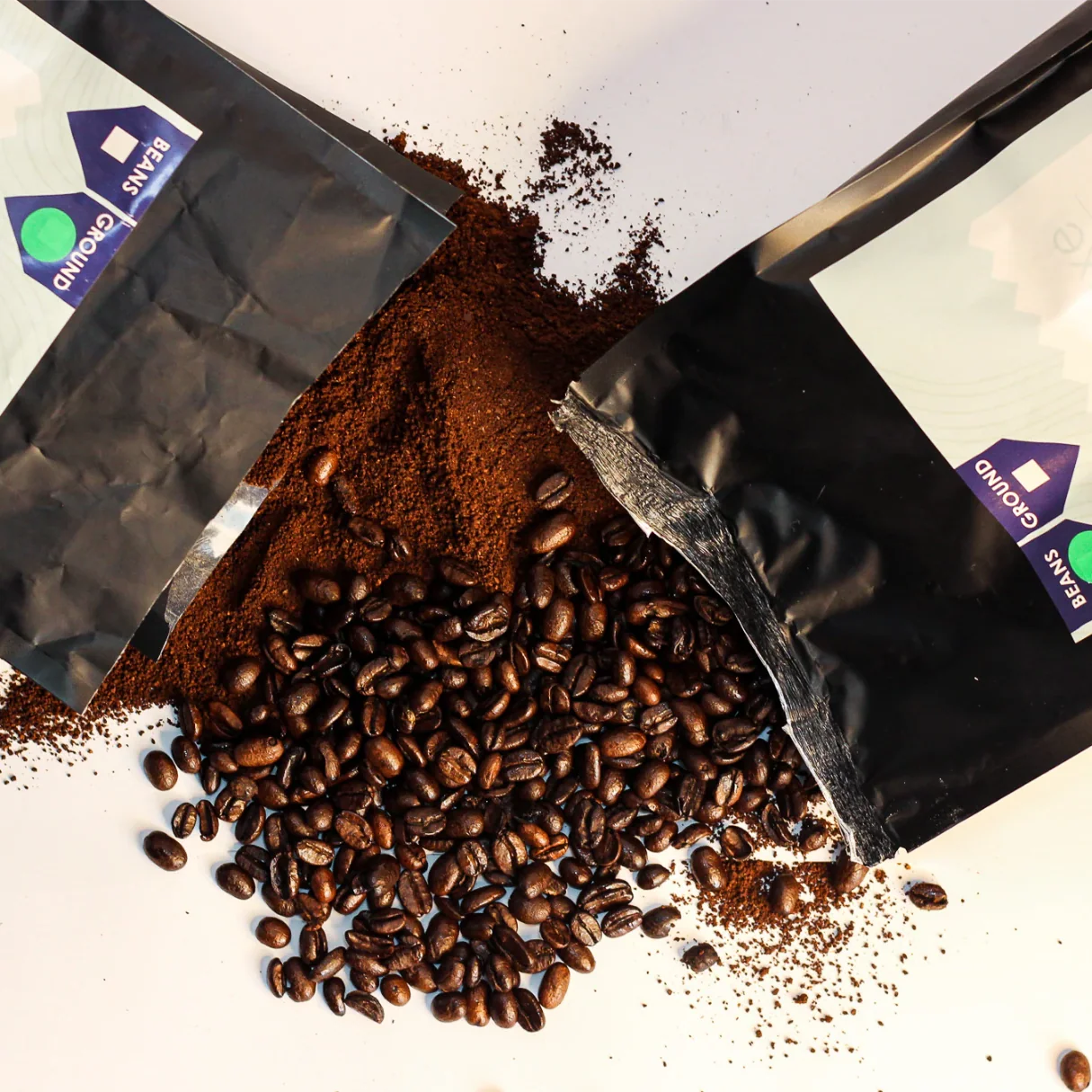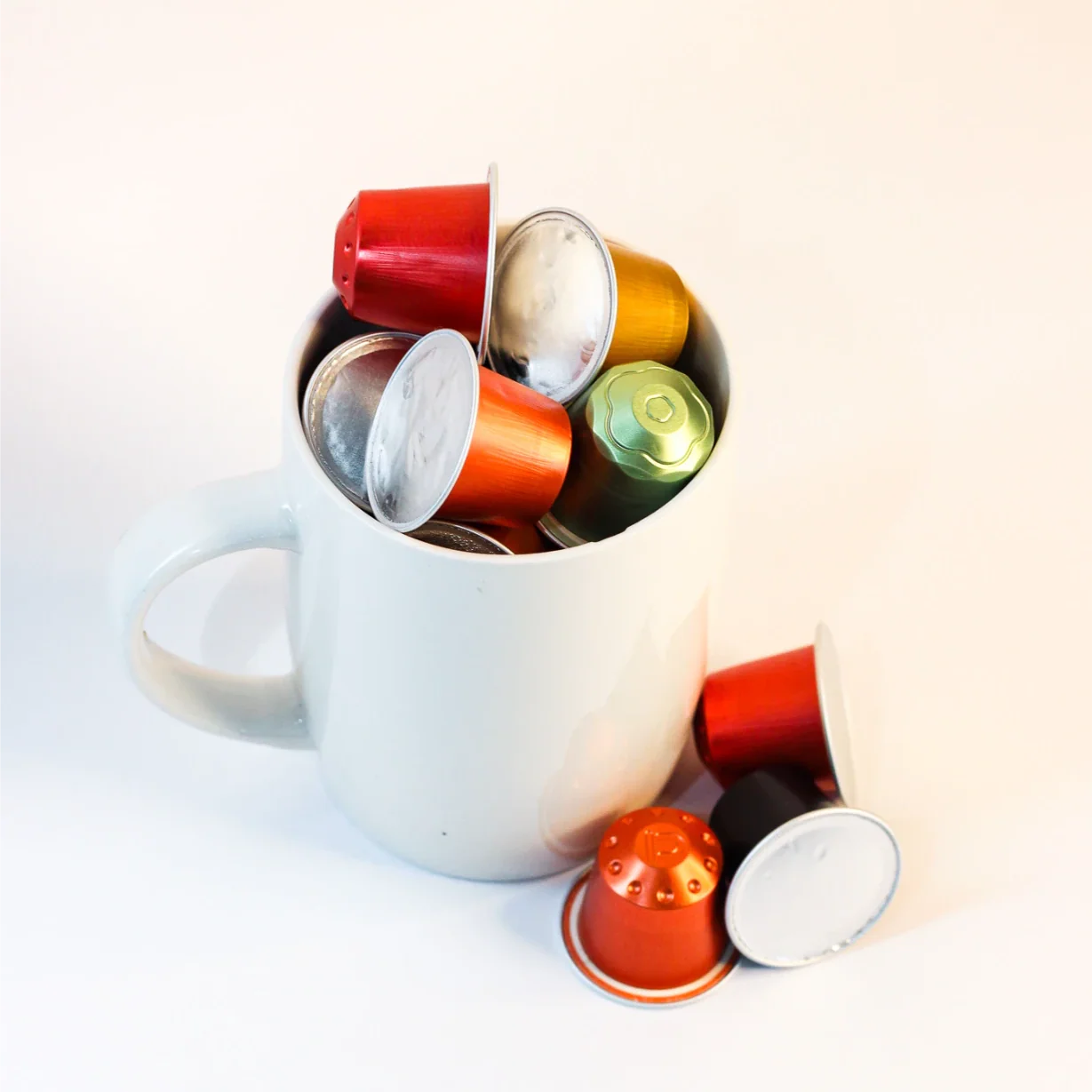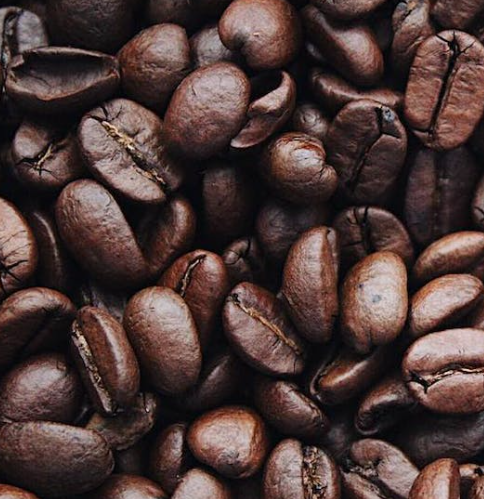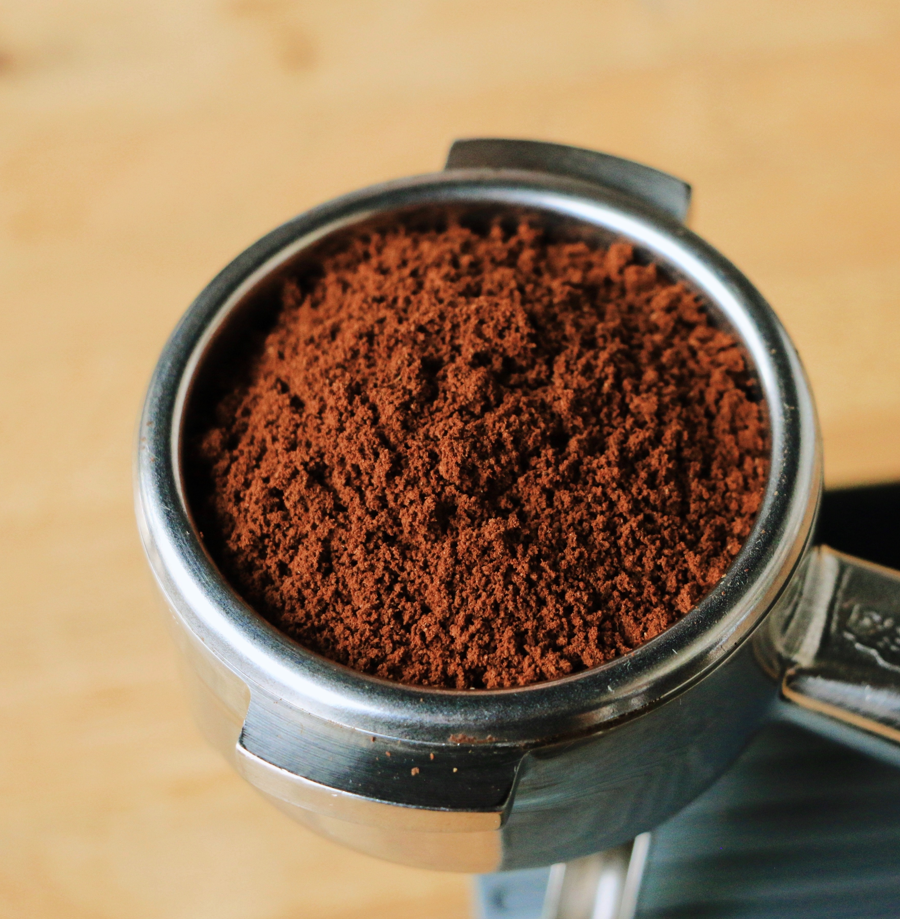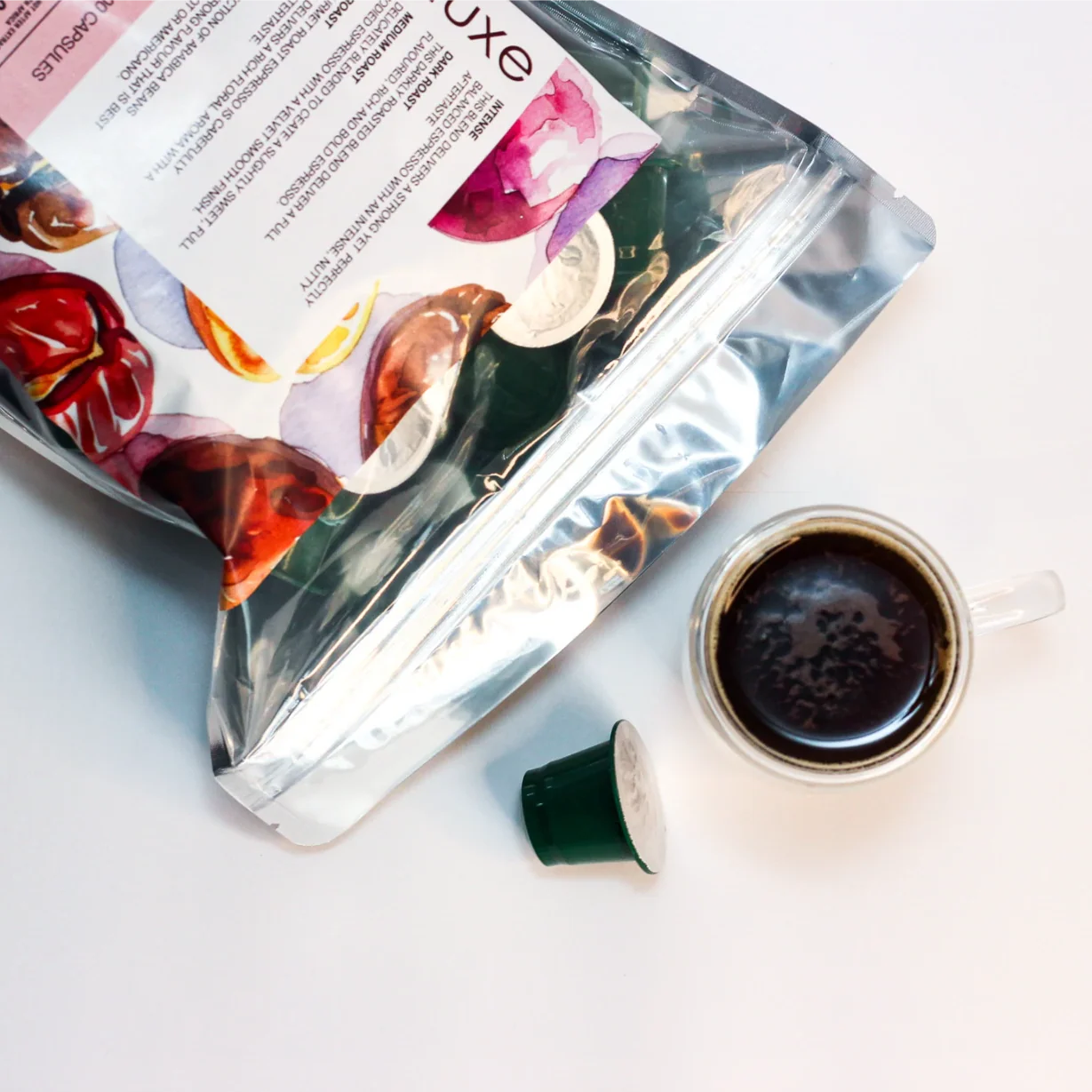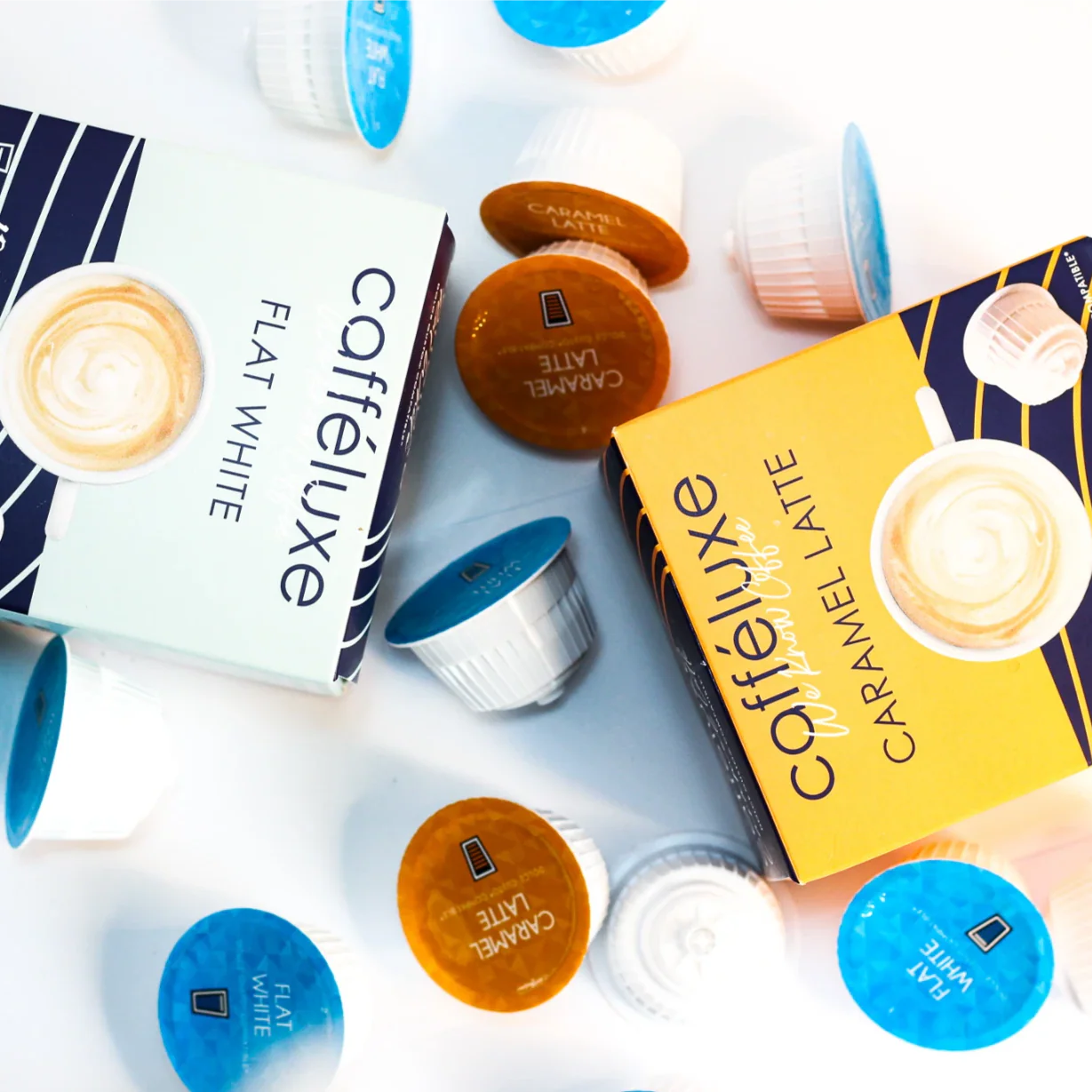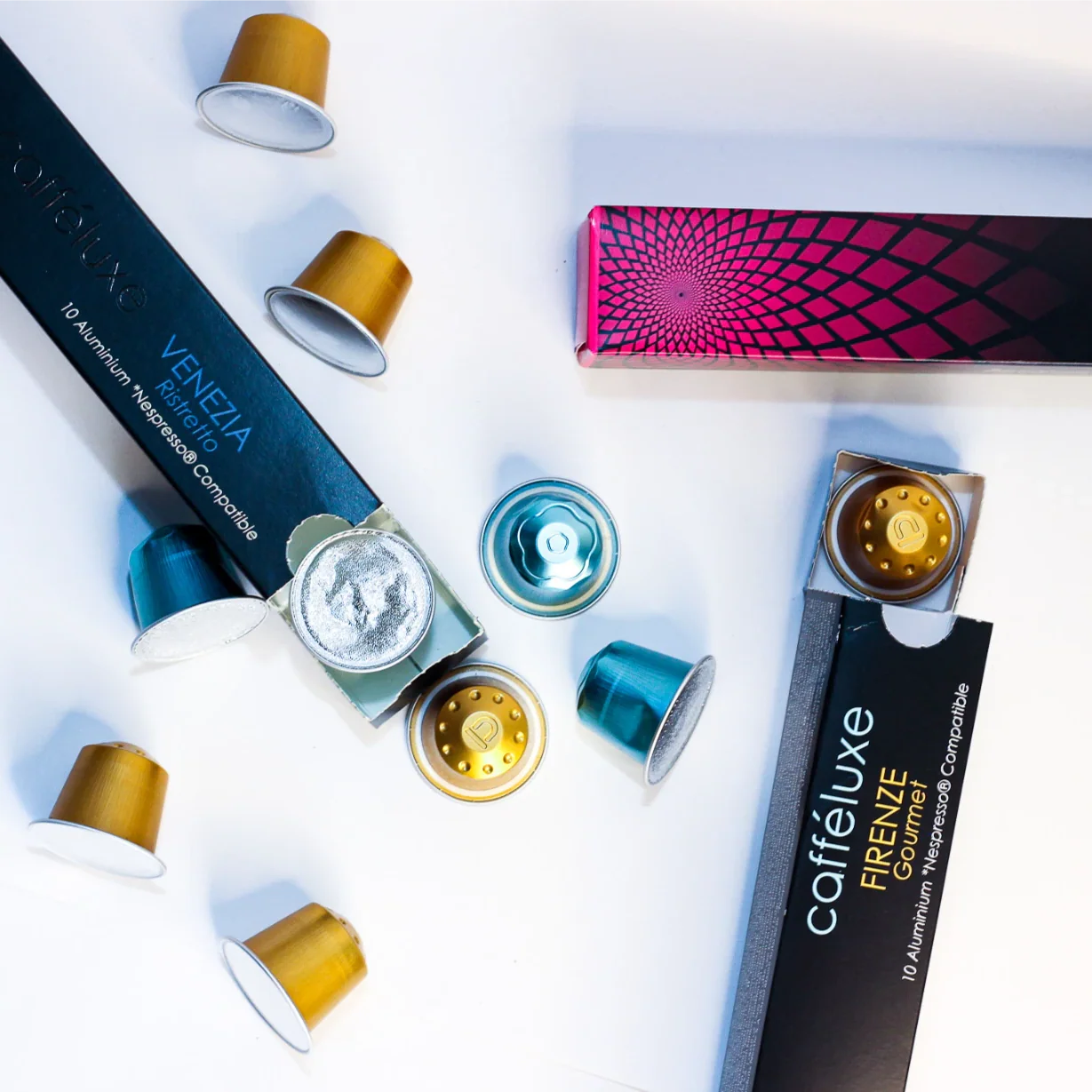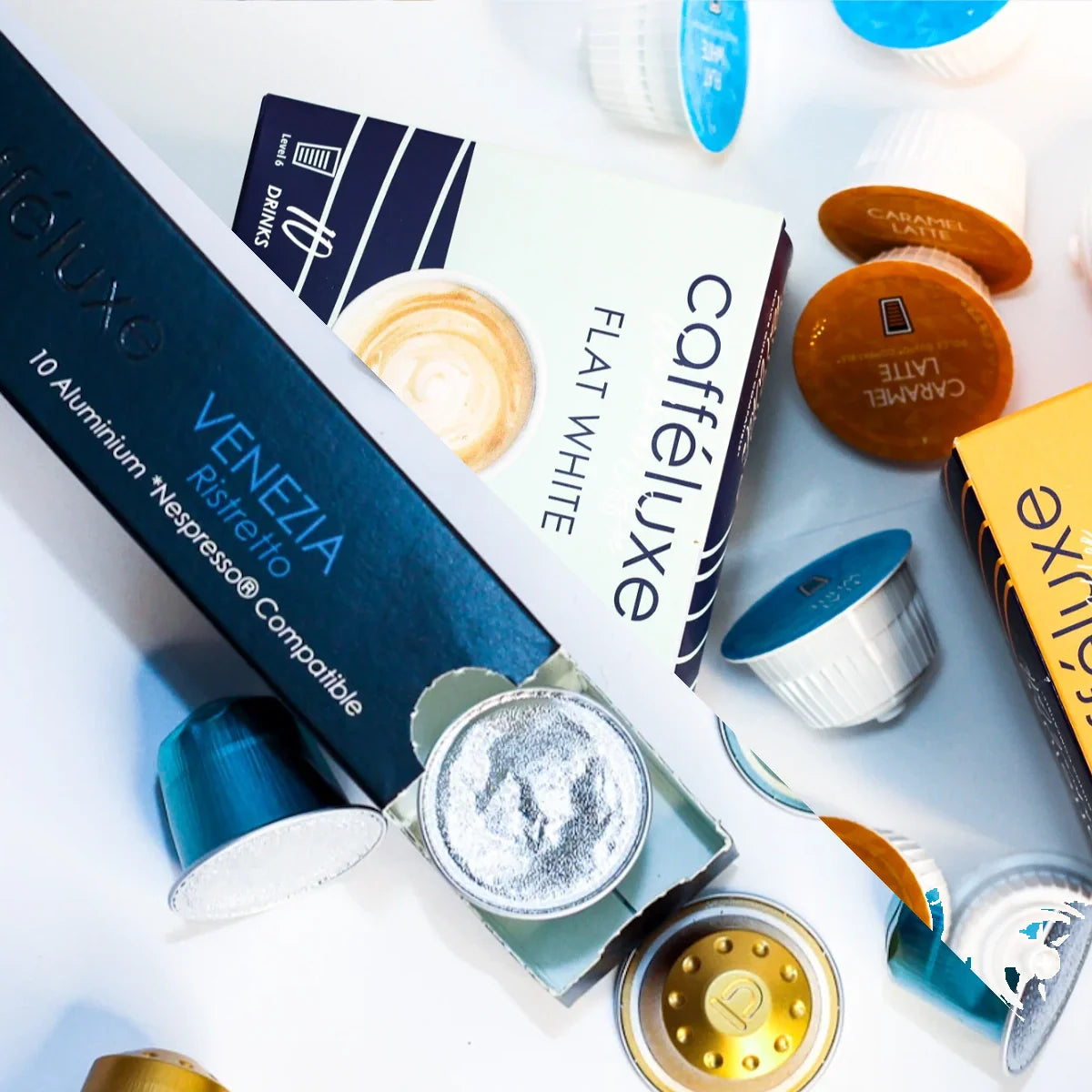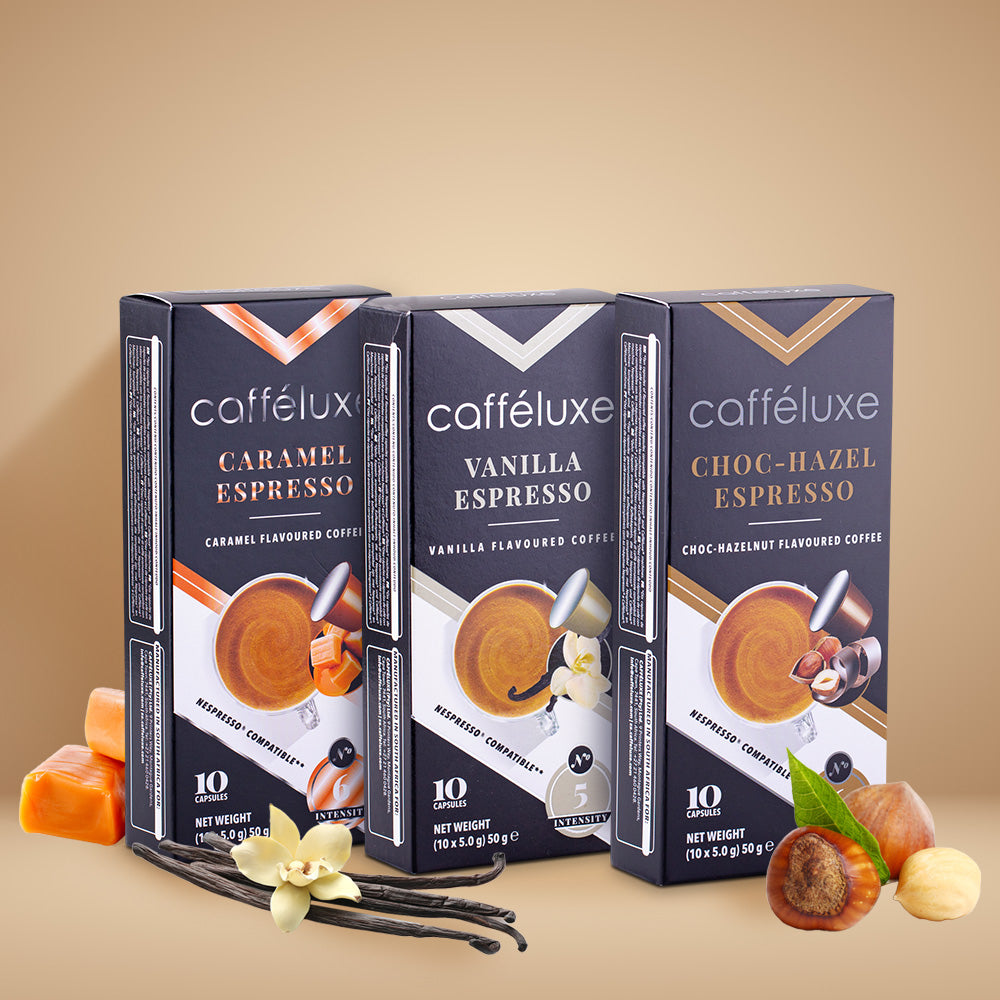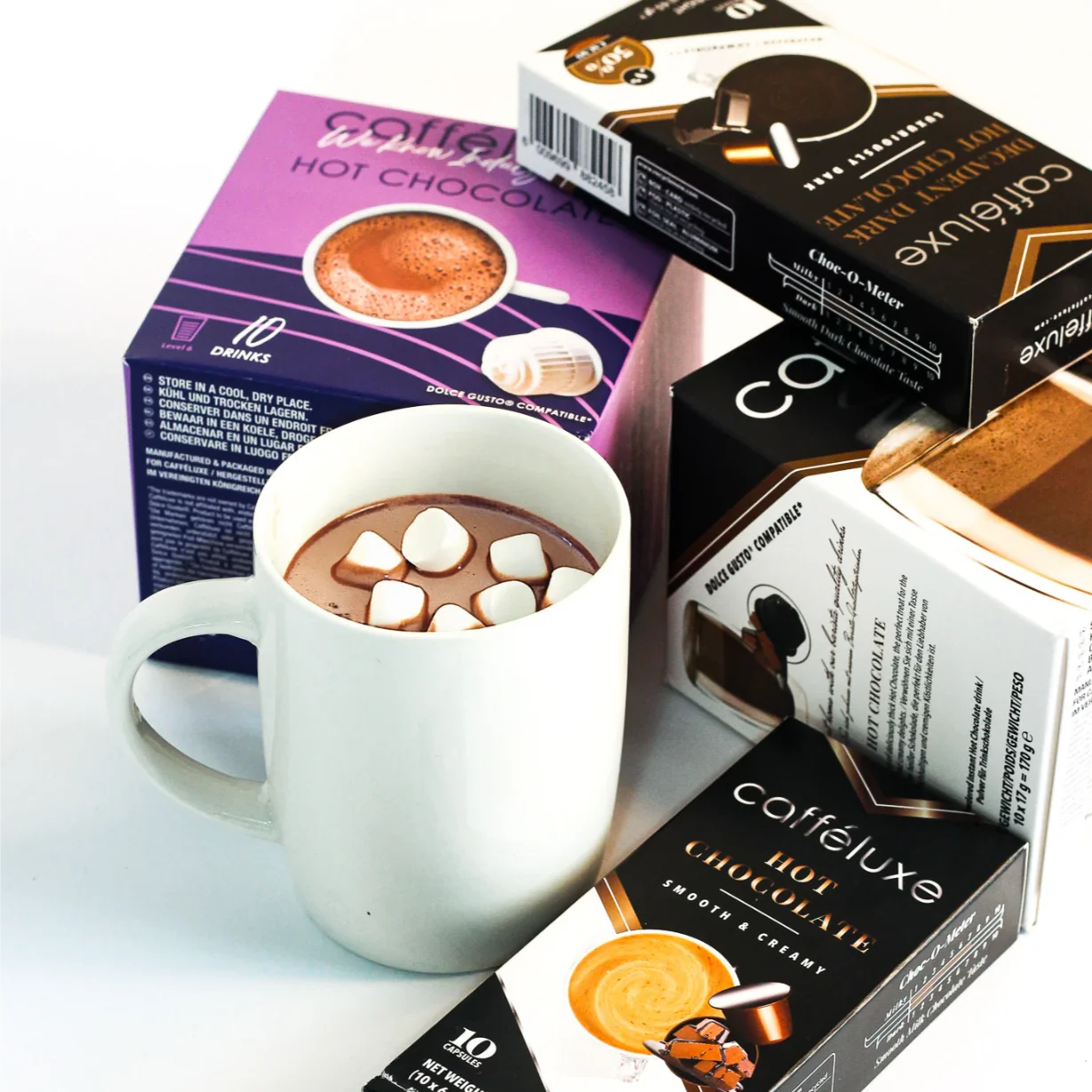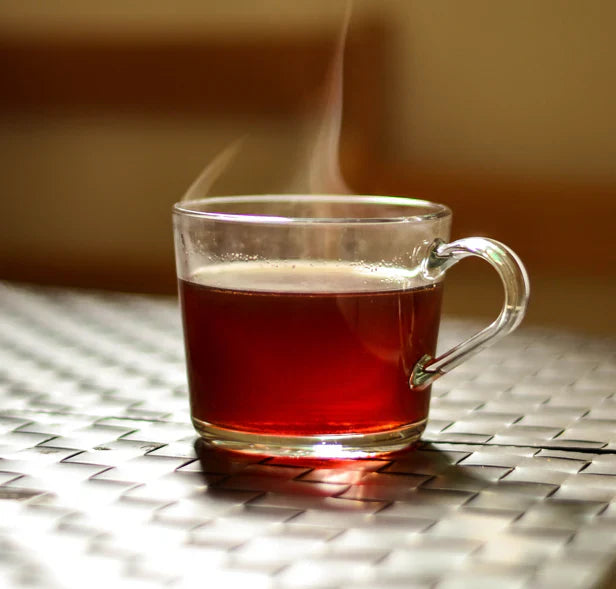The Grind
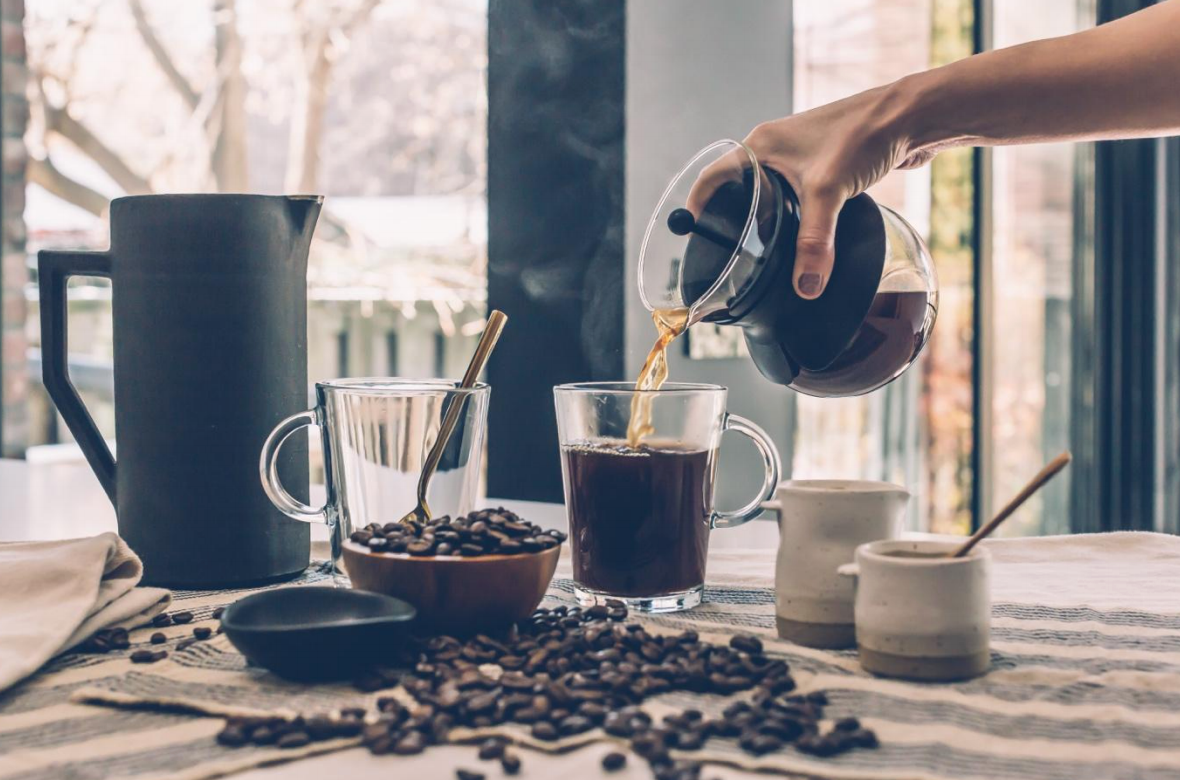
The Grind
Coffee vs Energy Drinks: Which Is Healthier?
by Tam BT on Jan 31 2021
A study done in 2013, showed how energy drinks can cause more vehement heart contractions. This could be extremely dangerous for people with pre-existing heart conditions.
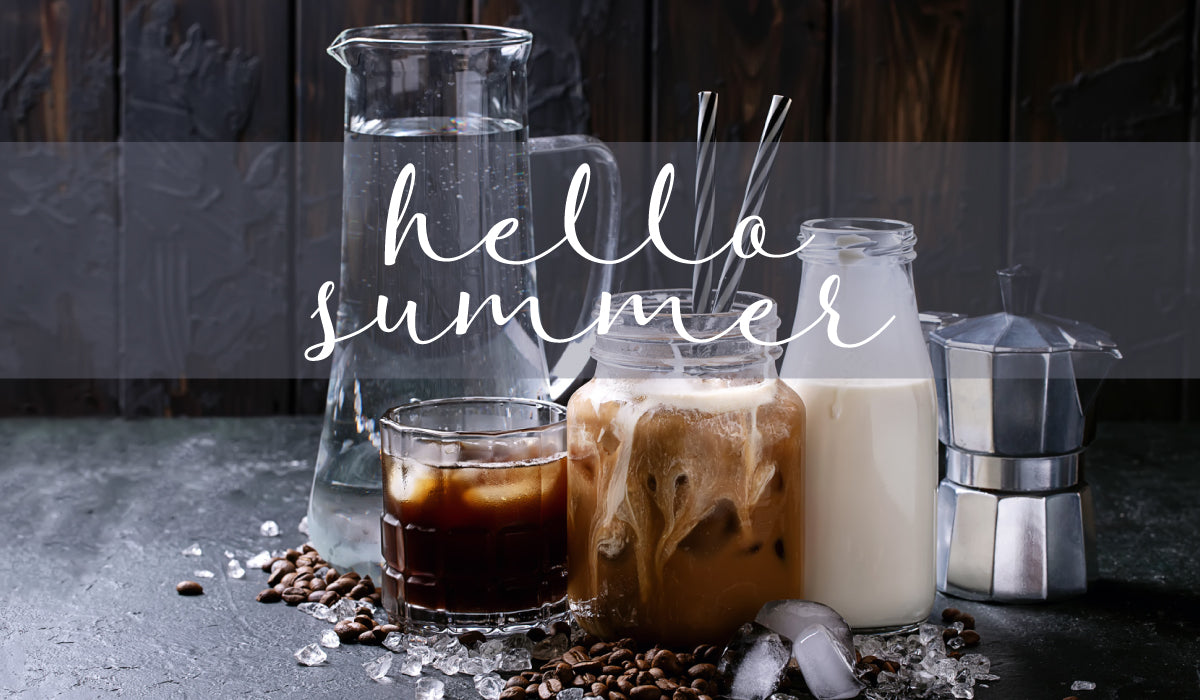
The Grind
Cold Brews, Iced Coffees & Frappuccinos
by caffeluxecoffee Admin on Oct 29 2018
We can't get enough of these yummy iced coffee recipes and just had to share them with you. They're easy to make and costs very little Randella's per cup. If that's not enough, making it yourself means you get to choose your favorite Cafféluxe variant.
So... Bring on the summer heat! We have you covered with the best brews in town.
Thai Iced Coffee
Prep: 10 minsMakes: 2 to 4 servings
Ingredients:2x 110ml Lungo shots, strong coffee4 - 6 tablespoons sweetened condensed milkIce cubes1/4 cup evaporated milk or fresh heavy cream
Method:
Pour the coffee into a glass jug or other container for mixing and pouring.
Add sweetened condensed milk to taste and stir well until dissolved. Add a few ice cubes and refrigerate for 1 or more hours.
To serve, place a few ice cubes in the bottom of each glass and pour the coffee over. Top each drink with a few tablespoons of the evaporated milk or heavy cream.
Taste test the coffee—you want it to taste strong and sweet. Add more sweetened condensed milk if you prefer it sweeter, or more evaporated milk/heavy cream for a richer taste or if it's too strong. (Note that this iced coffee is meant to be rather sweet.)
Turn this drink into a cocktail: This iced coffee is excellent as is, or serve with a shot of Irish cream, Kahlua, or your favorite liqueur.
Frappuccino
Prep: 10 minsMakes: 8 servings
Ingredients:3x 110ml Lungo shots, strong coffee2/3 can sweetened condensed milk1 cup whole milk1/2 vanilla bean2 teaspoons vanilla8 cups ice
Method:
Brew the strong coffee and let it chill. Use a refrigerator or freezer to speed up the process, or just let it chill in the fridge overnight.
Add the strong chilled coffee, milk, and sweetened condensed milk to a blender.
Split the vanilla bean. Use half of the split bean and scrape the seeds out. Place the seeds in the blender. Add in the vanilla extract. Fill the blender the rest of the way with ice (leaving a little room at the top for blending)
Blend until smooth. Serve with whipped cream.
Frappuccinos can also be frozen in mason jars and kept in the freezer for up to 3 months!
Cold Brew
Prep: 10 minsMakes: 4 - 6 servings
Ingredients:4 cups of filtered water1 cup of ground coffee
Method:
To make the best cold brew, start with a quality coffee bean. A coarse grind works best and makes filtering easier, so skip your standard containers of pre-ground coffee and buy whole beans and grind it yourself.
With your ingredients ready, place the ground coffee in the pitcher. As you stir, slowly pour water over the beans. The moistened coffee will immediately begin infusing the water with flavor and you will notice a color difference right away.
Once the beans are thoroughly saturated, cover your brewing container with a lid or cling wrap. Place it in the refrigerator and let it steep for 12 hours, though you could do up to 24 hours.
Filtering the finished coffee is important. Any filter system will do, you just want to make sure to get as much of the coffee grounds out of the drink as possible.
Store your filtered cold brew in an air-tight container in the refrigerator. It will stay fresh for up to a week—a shelf life hot brewed coffee can't touch!
Mix it up:
Cold brew can be sweetened with your favorite liquid sweetener or milk. Unlike hot coffee, granulated sugar or sweeteners will not dissolve well in cold coffee. You can also serve it over ice or make coffee cubes so the water doesn't dilute your brew.
Cold brew makes superior iced coffee drinks to a hot brew method as well. It's also a great alternative for mixing up coffee cocktails, giving you the rich flavor of espresso without the need for a fancy machine.
Since it lacks the bitterness, cold brew is an excellent way to add the flavor of coffee to baked goods, marinades, and sauces.
Source: www.thespruceeats.com
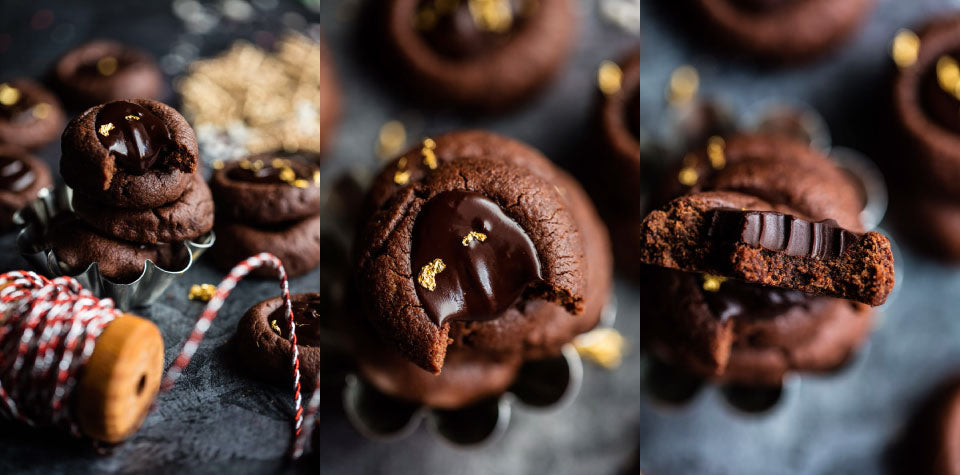
The Grind
Chocolate Espresso Thumbprint Cookies
by Andrew Bloch on Jun 28 2017
Ingredients
1 cup unsalted butter (softened)
1 cup granulated sugar
1 egg
2 teaspoons vanilla extract
40ml Cafféluxe Dark Roast Espresso
2 cups all-purpose flour
1/2 cup cocoa powder
1 1/2 teaspoons salt
1-2 tablespoons heavy cream (optional)
Chocolate Ganache
8 ounces semi-sweet or dark chocolate chopped
1/3 cup heavy cream
1 teaspoon vanilla extract
40ml Cafféluxe Dark Roast Espresso
Instructions
Preheat the oven to 180°C (350°F). Line a baking sheet with parchment paper.
In a large bowl using an electric mixer, beat together the butter and sugar until light and fluffy. Add the egg, vanilla, and espresso shot and beat until incorporated. Add the flour, cocoa powder, and salt, beating until just combined. If the dough feels dry, add 1 tablespoon heavy cream.
Roll the dough into 2 teaspoon size balls and place 1 inch apart on the prepared baking sheet. Using the end of a wooden spoon or your thumb, press gently in the center of each to create an indentation.
Transfer to the oven and bake, rotating sheets halfway through, until cookies are just set, about 7-8 minutes. If the indentations lose their definition, gently press the centers in again. Cool slightly on baking sheet and then transfer cookies to wire racks, and let cool completely.
Meanwhile, in a microwave safe bowl, combine the chocolate and cream. Microwave on 30 second intervals until melted and smooth. Stir in the vanilla and espresso shot until dissolved. Spoon the ganache into the center of each cookie. Decorate as desired with sprinkles or edible gold leaf. Keep cookies stored in an airtight container for up to 1 week.
*Recipe sourced from: https://www.halfbakedharvest.com/chocolate-espresso-thumbprint-cookies/
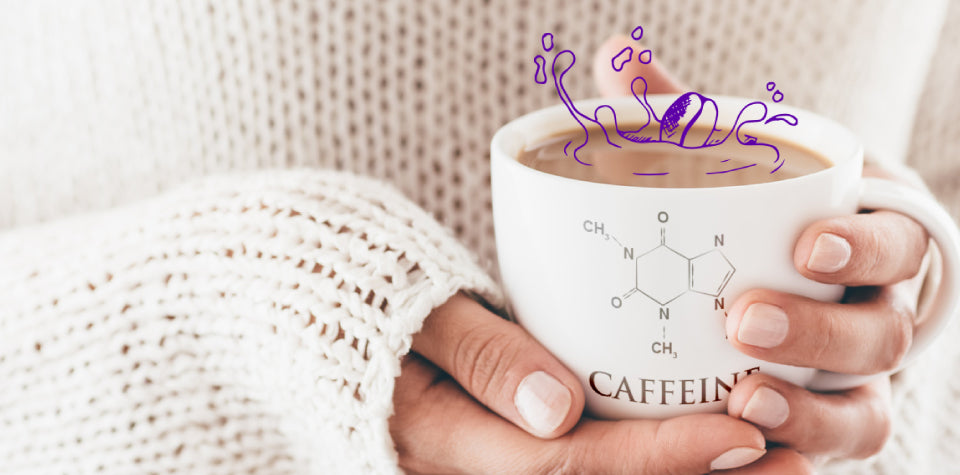
The Grind
by Andrew Bloch on Jan 24 2017
Caffeine. It's one of the most widely-publicised ingredients in coffee, and it's what puts the get-up-and-go into our morning cup of java. But aside from its hugely welcoming effect as a stimulant, particularly early in the morning and late at night, how much do you actually know about caffeine, and the effect it has on the human body? Let's strip it down to the bare essentials, and take a closer look.
What Is Caffeine?
In its most basic form, caffeine is a drug - albeit a legal one found naturally in coffee and in a variety of beverages. By simply altering the actions of a number of hormones and neurotransmitters, two of our most important chemical signals, caffeine is able to produce a significant effect within our bodies.
As soon as you ingest a dose of caffeine, either through a cup of tea, coffee, or another caffeinated beverage, the caffeine begins to bind itself to the adenosine receptors throughout your brain and nervous system. These receptors act as inhibitory neurotransmitters that suppress the level of activity of the neurons that interact with them. Given that adenosine is associated with the promotion of sleep and relaxation, and that caffeine binds itself to these receptors, preventing them from performing their intended action, this is the reason behind the alert and wakeful feeling that most people experience when consuming caffeine.
Once the caffeine has suppressed your adenosine function, it then begins to alter the role of other hormones and neurotransmitters within your body - the most significant of these being the adrenals that produce and secrete epinephrine and cortisol. These 'fight or flight' hormones are used to increase your heart and respiration rates while also causing you to relax. Studies show that caffeine is able to increase the amount of epinephrine in our bodies by as much as 250%, effectively producing a stress response, while increasing the circulation of serotonin in parts of the nervous system as well. The result? Increased energy levels and an elevated mood, all thanks to one natural drug. No wonder coffee is such a beloved morning, afternoon, and evening staple!
The Benefits of Caffeine
Although caffeine is technically classified as a drug, it nevertheless has far fewer side effects than illegal narcotics, and even legal substances such nicotine and alcohol. In fact, when taken in moderate quantities, it can even have a proven range of benefits, such as:
Morning alertness: Tired in the mornings? A jolt of caffeine can have just the stimulating effect your body needs to get up and at 'em.
Athletic performance: Studies have found that caffeine can in fact help athletes improve both their endurance and muscular power. This equates to better training sessions and greater gains in strength, fitness and overall performance
Improved cognitive performance: In addition to better preparing your body for physical endurance, caffeine can also help your mind to think more clearly, with low to moderate doses of caffeine facilitating improvements in both short-term memory and systems processing.
Making the Most of Your Daily Cup
So how can you maximise these very real benefits while avoiding any potential side effects?
Monitor your caffeine intake. While low to moderate doses of caffeine can be beneficial, ingesting too much over time can lead to a continuous replacement of hormones within your body, broken down by the continuous binding of caffeine to your receptors. Ultimately this can lead to a decrease in Vitamin B, a suppression of iron absorption, and headaches and fatigue should you ever lower your caffeine intake. If you ever start to feel jittery after consuming coffee or other caffeinated beverages, limit your intake immediately, and monitor your body for other symptoms of overexposure to caffeine.
Experiment with alternatives. Want to experience the naturally stimulating qualities of caffeine without drinking coffee? Try alternatives such as cacao, or unprocessed chocolate. Cacao contains a compound similar to caffeine that is able to stimulate blood flow throughout the body while leaving the nervous system intact. As a result, you'll feel more alert, vibrant and energised - although you may want to keep an eye on your waistline if you start to consume it on a regular basis!
Now that we've laid the ins and outs of caffeine bare, it's time for you to decide if and when to regulate your caffeine intake. If you feel the benefits of being more awake and more stimulated throughout the day, it's likely your caffeine consumption is in balance with your body's needs. If, however, you feel erratic, shaky or anxious, you may want to cut back on coffees and cooldrinks, and supplement your fluid intake with water instead. Whichever direction you choose, however, it's safe to say that caffeine is more good than bad - so whether you feel better on one cup of coffee, or even two or three, drink up and enjoy!
